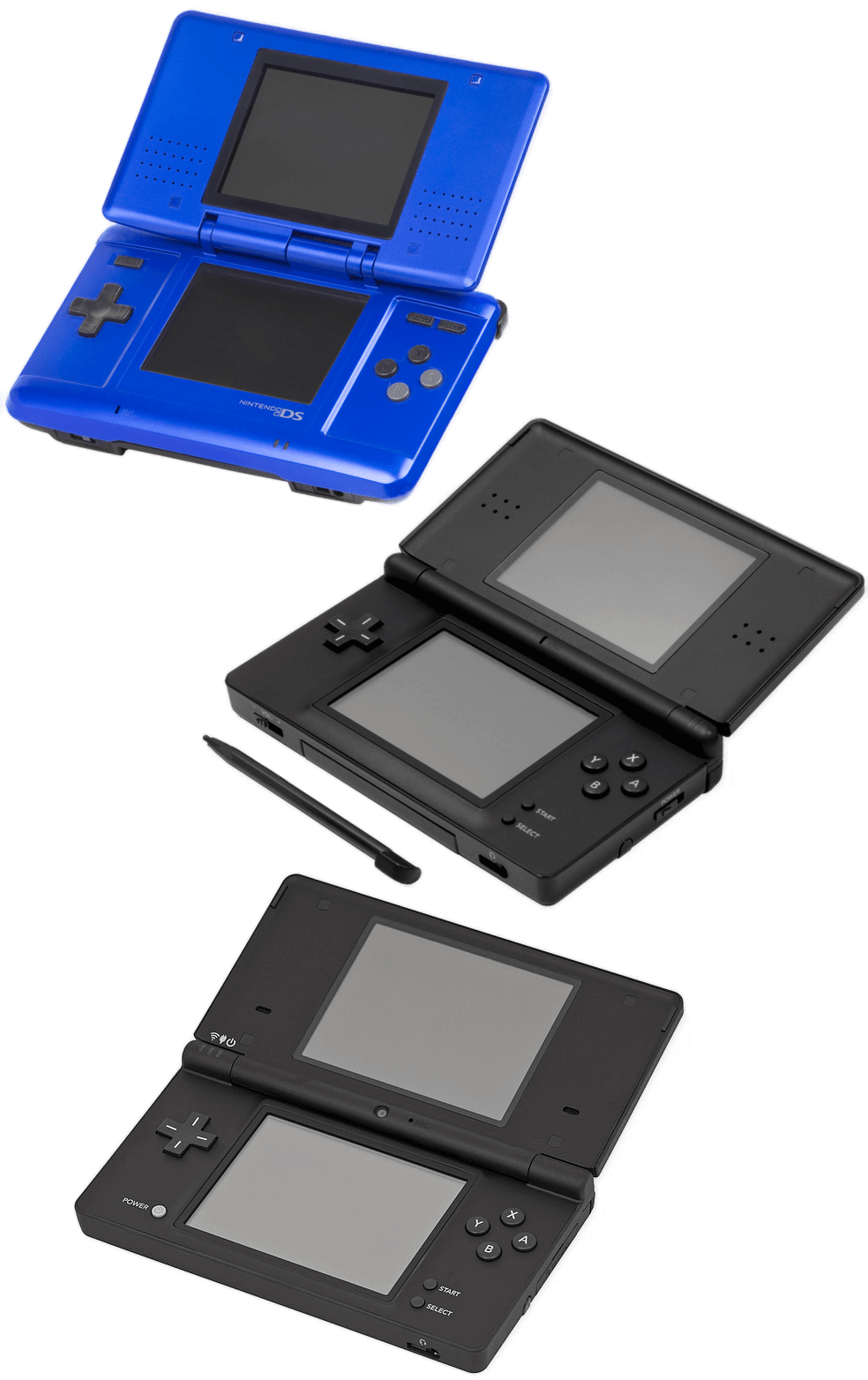
The Nintendo DS, released in 2004, was a bold and unconventional handheld system that redefined portable gaming. With its dual screens (hence “DS”), including one touchscreen, a built-in microphone, and Wi-Fi connectivity, the DS was a risk-taking piece of hardware that initially puzzled some gamers and developers. However, it quickly proved its value with innovative gameplay, strong backward compatibility with Game Boy Advance titles, and a wide variety of games catering to both casual and hardcore audiences. The DS’s unique feature set helped expand the reach of handheld gaming to entirely new demographics.
The Nintendo DS’s game library became one of the most diverse and successful in gaming history. New Super Mario Bros., Mario Kart DS, Animal Crossing: Wild World, and The Legend of Zelda: Phantom Hourglass modernized Nintendo’s classic franchises for touch-based and portable play. Meanwhile, titles like Nintendogs, Brain Age, and Professor Layton introduced a broader audience to gaming, leading to an explosion in casual and educational games. Hardcore gamers also found gems like Pokémon Diamond & Pearl, The World Ends with You, Castlevania: Dawn of Sorrow, and Advance Wars: Dual Strike.
Selling over 154 million units worldwide, the DS became the best-selling handheld console of all time, and one of the best-selling systems overall. It introduced mechanics and design principles that would shape the future of mobile and touch-based gaming. Its success paved the way for the Nintendo 3DS and helped solidify Nintendo’s dominance in the handheld space. By embracing innovation over raw power, the DS became a cultural phenomenon and a beloved system that left a lasting mark on video game history.
Nintendo DS Technical Specifications
| Component | Specification |
|---|---|
| CPU | ARM946E-S @ 67 MHz (main), ARM7TDMI @ 33 MHz (secondary) |
| Graphics | Two 2D engines (one per screen), 260K-color support |
| Resolution | 256×192 pixels per screen |
| Touchscreen | Bottom screen: resistive single-touch |
| Sound | Stereo speakers, headphone jack, 16-bit audio |
| Media | Proprietary DS Game Cards (up to 512MB), GBA cartridge slot (for compatibility) |
| Wireless | IEEE 802.11 (Wi-Fi) for local and online multiplayer |
| Battery Life | 6–10 hours (varies by model) |
| Release Date | 2004 (Japan and North America), 2005 (Europe and Australia) |